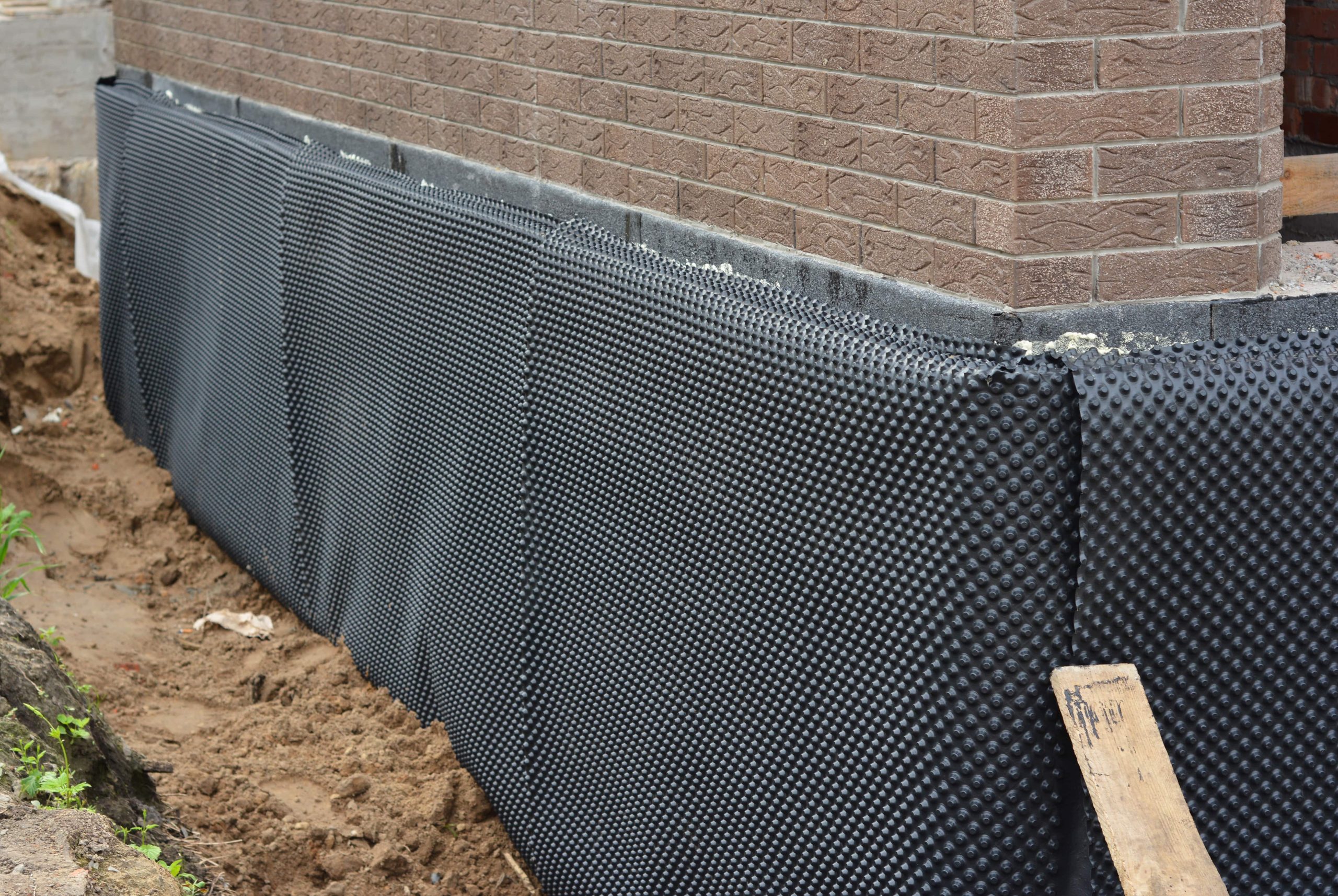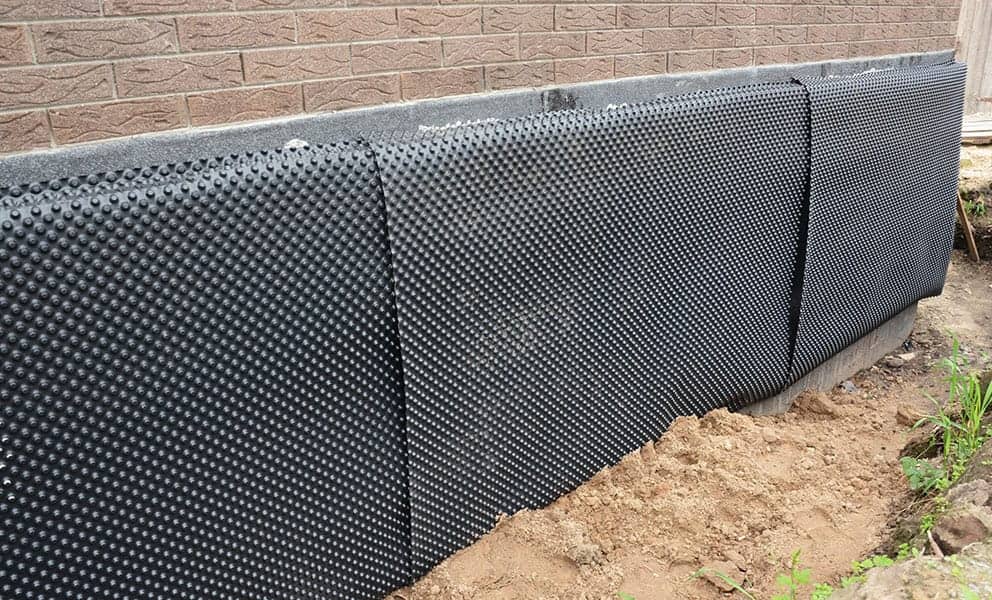Comprehensive list for damp specialist newcastle to identify moisture issues early
Comprehensive list for damp specialist newcastle to identify moisture issues early
Blog Article
Exploring the Different Techniques and Solutions for Effective Damp Proofing
Wetness in buildings positions substantial obstacles to both architectural integrity and indoor air top quality. Numerous methods and services have actually emerged to fight this prevalent issue. From typical damp-proof membrane layers to cutting-edge chemical therapies, each technique uses unique advantages. Recognizing these alternatives is important for reliable wetness control. Nevertheless, choosing the appropriate remedy depends upon certain building conditions and demands, triggering further expedition right into the most reliable wet proofing methods offered.
Comprehending the Root Causes Of Moisture
Dampness can occur from different resources, recognizing these reasons is crucial for reliable removal. Commonly, dampness stems from three primary resources: climbing moist, passing through moist, and condensation. Increasing wet takes place when groundwater travels up through permeable materials, such as brick or stone, usually due to an absence of an effective obstacle (damp removal newcastle). Penetrating moist is typically triggered by exterior factors, including roof leaks, faulty rain gutters, or damaged walls, allowing water to penetrate a residential or commercial property. Condensation, on the other hand, results from excess dampness airborne, usually aggravated by bad ventilation and temperature level differences, resulting in water droplets basing on surface areas. Determining these underlying issues is necessary, as each kind of moisture calls for a customized method for removal. Proper assessment aids in establishing the most reliable options, eventually safeguarding the architectural honesty of a building and boosting indoor air top quality
Traditional Damp-Proof Membranes

Chemical Damp-Proofing Solutions
Chemical damp-proofing solutions provide a cutting-edge technique to avoid wetness intrusion in structures. These techniques generally involve the application of fluid chemicals that permeate stonework and form an obstacle against rising wet. Generally made use of chemicals consist of silanes, siloxanes, and other water-repellent agents that react with surface products to produce a hydrophobic layer.The application process generally needs drilling holes into the walls, infusing the chemical solution, and enabling it to heal. This method is especially helpful for older frameworks where traditional damp-proof membranes may be unwise. Chemical damp-proofing can be less disruptive and more affordable than comprehensive renovation projects.While effective, these solutions depend on correct application and ecological conditions for peak efficiency. damp specialist newcastle. Regular upkeep and tracking are vital to assure the durability of the damp-proofing therapy. Overall, chemical damp-proofing stands for a functional option for protecting buildings against moisture-related damages
Dental Caries Wall Building Methods
Dental caries wall building strategies provide numerous benefits, specifically in dampness control and energy efficiency. By incorporating an air gap between 2 layers of stonework, these walls efficiently reduce water access while enhancing insulation. This combination not just safeguards frameworks from wetness but additionally contributes to lowered energy usage.
Advantages of Cavity Wall Surfaces
When thinking about effective damp proofing methods, the benefits of tooth cavity walls stand apart plainly. Cavity wall surfaces contain two different layers, developing an air void that successfully minimizes dampness infiltration. This design lessens the threat of wetness, as the external wall surface acts as a barrier versus rain and water ingress. Furthermore, tooth cavity wall surfaces boost thermal insulation, which adds to energy performance by reducing warm loss. They additionally give audio insulation, assisting to create a quieter indoor setting. Moreover, the air gap permits for ventilation, which aids in wetness control and decreases the likelihood of mold development. These benefits not just boost the overall comfort of a structure however likewise add to its longevity and structural integrity.
Wetness Control Strategies
Efficient wetness control approaches are important in cavity wall surface building to ensure long-lasting protection against wetness. One key technique entails the consolidation of weep openings, which help with water drain from the tooth cavity, protecting against build-up. Furthermore, the usage of breathable membrane layers can assist handle dampness levels while allowing trapped vapor to leave. Appropriate placement of insulation is likewise essential, as it ought to not block drain paths. Making sure that the outer leaves of the dental caries wall surface are constructed with water-resistant products improves general longevity. Routine upkeep checks are important to recognize any type of clogs or damages early, protecting the structure's stability. Eventually, a mix of these techniques forms a robust protection against moisture breach in tooth cavity walls.
Insulation and Power Effectiveness
Insulation plays a vital duty in enhancing energy efficiency within cavity wall building and construction. By incorporating protecting products, these wall surfaces develop a thermal barrier that lessens warmth loss and decreases energy usage. Reliable insulation not just aids preserve a secure indoor temperature but also alleviates the threat of wetness, as it stops condensation within the wall surface cavity. Various techniques, such as using stiff foam boards or mineral wool, can be utilized to achieve optimal insulation performance. In addition, appropriate installment is necessary to assure that voids and voids are lessened, which can or else jeopardize energy effectiveness. Ultimately, a well-insulated tooth cavity wall adds substantially to general sustainability and reduces heating and cooling prices for homeowners.
Exterior Damp Proofing Methods
Exterior wet proofing methods are crucial for securing frameworks from dampness seepage. Two efficient techniques include the application of water-proof membranes and the installment of French drains pipes. These services help minimize water buildup and protect the honesty of buildings.
Waterproof Membrane Layer Application
While various techniques exist for avoiding wetness access, the application of water resistant membrane layers remains an extremely effective external wet proofing method. These membranes are typically made from products such as polyethylene, rubber, or customized bitumen, providing a robust barrier versus water penetration. The installation process involves using the membrane to the external surfaces of wall surfaces or structures, guaranteeing total protection to stop leaks. Correct attachment and sealing at joints are essential to making best use of efficiency. Water resistant membranes can be used in various types, including liquid finishings and sheet membranes, permitting adaptability based on the specific requirements of the structure. This technique not only shields structures from moisture but also enhances their long life and architectural stability.
French Drainpipe Installment
One efficient technique for managing groundwater and preventing wetness build-up around a structure's structure is the installation of a French drainpipe. This water drainage system contains a trench full of crushed rock and a perforated pipe that redirects surface water away from the structure. Proper installation needs careful planning, making sure that the drain inclines far from the structure to website assist in optimal water circulation. Additionally, the area of the drain is vital; it ought to be placed in locations susceptible to pooling or excess moisture. Routine upkeep, including cleaning particles from the crushed rock and ensuring the pipe continues to be unhampered, is crucial for lasting efficiency. Eventually, a well-installed French drain can greatly lower the risk of water-related issues in basements and structures.
Inside Waterproofing Methods
Inside waterproofing techniques are important for shielding a building's interior from dampness seepage and possible water damage. These techniques commonly include the application of specialized products and strategies developed to develop a dampness obstacle within the framework. One typical technique is using water resistant coatings or sealants on walls and floors, which prevent wetness from permeating surfaces.Additionally, installing indoor drain systems, such as sump pumps, can successfully take care of water build-up in basements and creep spaces. One more method includes using vapor obstacles, which are mounted to prevent dampness activity from the ground right into living spaces.Moreover, dealing with any type of splits or gaps in walls or structures with proper sealants ensures a comprehensive protection versus water breach. By executing these indoor waterproofing methods, homeowner can considerably lower the danger of mold development, structural damages, and other moisture-related concerns. Correct implementation of these techniques is necessary for long-lasting defense and structure honesty.
Normal Maintenance and Evaluation Practices
Normal upkeep and examination practices are vital for assuring the lasting efficiency of wet proofing solutions in any building. Routine checks allow building proprietors to recognize very early indicators of moisture invasion, such as peeling paint, mold development, and mildewy smells. These signs can signal underlying issues that require immediate attention.Inspections need to be performed at the very least annually, concentrating on at risk locations like cellars, crawl rooms, and outside walls. Throughout these assessments, homeowner must examine sealers, water drainage systems, and ventilation to verify they operate correctly.Additionally, preserving downspouts and seamless gutters is crucial, as blocked systems can result in water buildup near the foundation. Applying a normal maintenance routine, together with prompt repair work, can considerably extend the life expectancy of moist proofing steps and secure the structural integrity of the building. Aggressive actions ultimately add to the general health and wellness of the living environment.
Frequently Asked Questions
For How Long Does Damp Proofing Commonly Last?
The duration of damp proofing efficiency differs, generally lasting in between 20 to 50 years. Variables such as application high quality, ecological conditions, and maintenance techniques considerably influence the longevity of the damp proofing treatment.

Can I Damp Evidence My Home Myself?
The private considered the expediency of do it yourself damp proofing. With proper study and the ideal products, it is feasible. They likewise acknowledged the importance of expert support to assure resilient efficiency and stop future issues.
What Are the Indicators of Inefficient Damp Proofing?
Signs of ineffective damp proofing consist of persistent musty smells, noticeable mold and mildew development, peeling off paint, damp spots on wall surfaces, and timber degeneration - mould treatment newcastle. Property owners should resolve these problems without delay to prevent further damages and health issues
Does Damp Proofing Affect Indoor Air High Quality?

Just How Much Does Professional Damp Proofing Cost?
Expert wet proofing expenses differ considerably, generally varying from $1,000 to $5,000 relying on the residential property's size, the degree of the moist problem, and picked methods. Each scenario needs a tailored analysis for exact rates. Frequently, dampness originates from 3 primary sources: increasing wet, passing through damp, and condensation. When thinking about efficient moist proofing approaches, the advantages of dental caries walls stand out plainly. External wet proofing methods are necessary for securing frameworks from dampness seepage. While numerous approaches exist for protecting against wetness ingress, the application of water resistant membranes continues to be an extremely effective external damp proofing technique. Indications of inefficient moist proofing include relentless mildewy odors, noticeable mold and mildew development, peeling paint, moist spots on wall surfaces, and wood decay.
Report this page